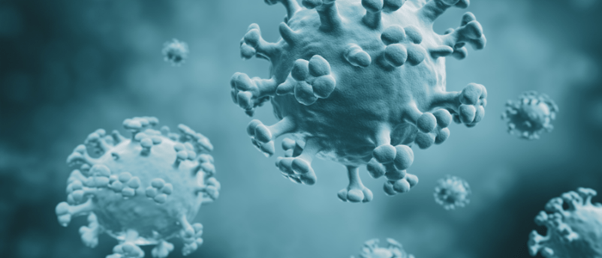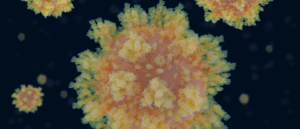
BioTechniques News
Beatrice Bowlby

Investigating influenza’s interactions with cellular proteins has led to an improved understanding of how it is able to jump between different types of hosts.
Researchers at the University of Oxford (UK) have collaborated with Diamond Light Source (Didcot, UK), the UK’s national synchrotron facility, to study influenza’s structure, particularly its replication mechanism, to understand how it adapts to different hosts. In doing so, they identified new potential drug targets, which could lead to novel antiviral drugs to inhibit influenza replication.
Normally influenza viruses can only infect one type of host, for example, birds, and need specific adaptations in order to jump to a different animal host. The influenza virus responsible for the 1918–1919 global pandemic is thought to have jumped from waterfowl into humans and is often considered the ‘founder virus’; it has contributed viral genome segments for all epidemic and pandemic influenza strains that have followed.
Influenza A is the only influenza virus known to cause flu pandemics, meaning that it can jump from animals to humans. The researchers of this study used techniques including cryo-EM and X-ray crystallography to understand how influenza can hijack human and animal cells for its replication and how a cellular protein called ANP32A is partially responsible for influenza’s host-jumping capabilities.
 Gotta catch ‘em all: DNA nets detect and capture SARS-CoV-2
Gotta catch ‘em all: DNA nets detect and capture SARS-CoV-2
An innovative COVID-19 diagnostic test has a similar sensitivity to PCR tests but without the wait time.
The virus stores its genes in RNA and synthesizes its own RNA polymerase for genome replication. This study found that the viral polymerase regulates the timings of transcription and replication, which can only begin once viral proteins have been produced. They also observed that the polymerase interacts with ANP32A and appropriates it to shelter viral RNA from the immune system.
The researchers utilized X-ray crystallography to determine the structure of this viral polymerase in near-atomic detail and observed that the single polymerases are paired together, forming a dimer. Alongside the crystal structure of the dimers, small-angle X-ray scattering (SAXS) was performed to show the role of dimer formation in polymerase function. They proposed that early in infection, the RNA polymerase performs transcription before switching to replication only when they are coupled together in dimers, after the production of additional copies of the polymerase.
Cryo-EM uncovered the interactions between RNA and the viral polymerase, showing that one polymerase in the dimer replicates the viral genome and the other coats the newly formed RNA in viral protein to hide it from the immune system. To stabilize the dimers and help hide the viral RNA from immune detection, influenza hijacks ANP32A.
Understanding how influenza utilizes ANP32A for its own benefits is crucial to learning how it is able to jump between hosts. ANP32A differs greatly between birds and humans, hence avian and animal influenza viruses needed to evolve to become less alike. A mutation in avian influenza’s polymerase could allow it to interact with human ANP32A, therefore this strain of bird flu is able to jump to and infect human hosts.
Ervin Fodor (University of Oxford), the corresponding author, concluded, “these studies help us to identify and validate targets for drug discovery. We are hoping that the new insights generated into workings of the influenza virus transcription machinery using the technologies at Diamond will eventually lead to antivirals targeting the influenza polymerase.”
The post New insights into influenza’s replication mechanism appeared first on BioTechniques.
Full BioTechniques Article here
Powered by WPeMatico
